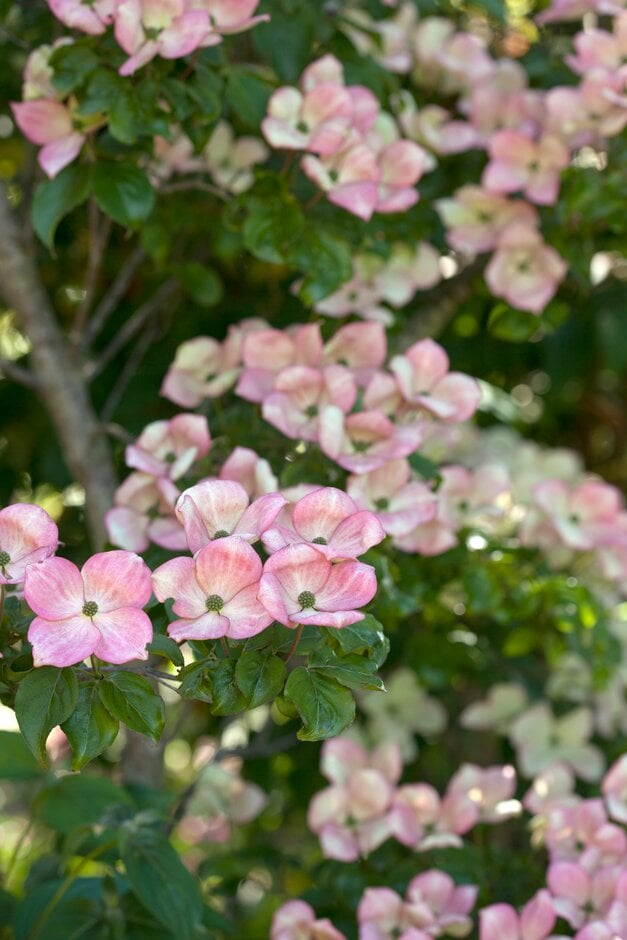Cornus kousa 'Miss Satomi'
kousa 'Miss Satomi'
'Miss Satomi' is a spreading medium-sized deciduous shrub with ovate leaves turning purple and deep red in autumn. Flower-heads with four ovate, deep pink bracts. Fruits strawberry-like, rosy-pink
Size
Ultimate height
4–8 metresTime to ultimate height
10–20 yearsUltimate spread
4–8 metresGrowing conditions
Moisture
Moist but well–drained, Well–drainedpH
Acid, Alkaline, NeutralColour & scent
| Stem | Flower | Foliage | Fruit | |
| Spring | Green | |||
|---|---|---|---|---|
| Summer | Pink | Green | ||
| Autumn | Purple Red | Pink | ||
| Winter |
Position
- Full sun
- Partial shade
Aspect
East–facing or South–facing or North–facing or West–facing
Exposure
Exposed or Sheltered Hardiness
H6Botanical details
- Family
- Cornaceae
- Native to GB / Ireland
- No
- Foliage
- Deciduous
- Habit
- Spreading branched
- Genus
Cornus can be deciduous shrubs or trees, or creeping, woody-based perennials, some with brightly coloured young stems. Tiny flowers are borne in dense clusters, sometimes with showy bracts. Many have fine autumn colour
- Name status
Accepted
How to grow
Cultivation
Grow in fertile, humus-rich, well-drained, neutral to acid soil in sun or light shade. For more advice, see flowering dogwood cultivation
Propagation
Propagate by semi-hardwood or hardwood cuttings or grafting
Suggested planting locations and garden types
- City and courtyard gardens
- Patio and container plants
- Architectural
- Cottage and informal garden
Pruning
Pests
Generally pest-free but may be susceptible to horse chestnut scale
Diseases
May be susceptible to cornus anthracnose and honey fungus
Love gardening
Sign up to receive regular gardening tips, inspiration, offers and more
View our Privacy Policy
Get involved
The Royal Horticultural Society is the UK’s leading gardening charity. We aim to enrich everyone’s life through plants, and make the UK a greener and more beautiful place.

